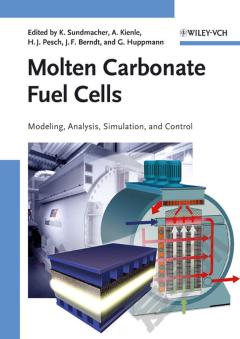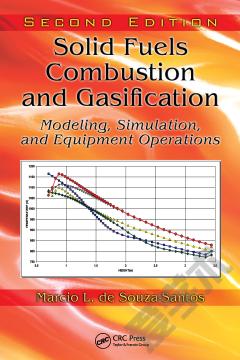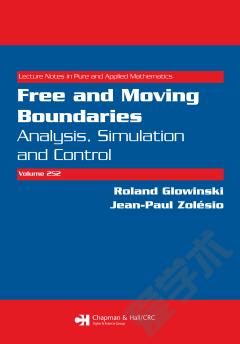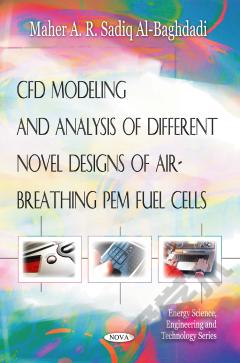Molten Carbonate Fuel Cells —— Modeling, Analysis, Simulation, and Control
----- 熔融碳酸盐燃料电池:模型、分析、模拟与控制
Preface. List of Contributors. Part I Design and Operation. 1 MTU's Carbonate Fuel Cell HotModule (Gerhard Huppmann). 1.1 The Significance of Fuel Cells. 1.2 Basic Statements of Power Production and Combined Heat and Power Systems. 1.3 Fuels for Fuel Cells. 1.3.1 Fuels Containing Gaseous Hydrocarbons. 1.3.2 Synthesis Gases. 1.3.3 Group of Gasified Hydrocarbons. 1.3.4 Secondary Fuel. 1.4 Why Molten Carbonate Fuel Cells. 1.5 The Carbonate Fuel Cell and its Function. 1.6 Optimisation by Integration: The HotModule Concept. 1.7 Manufacturing. 1.8 Advantages of the MCFC and its Utilization in Power Plants. 1.8.1 Electrical Efficiency. 1.8.2 Modularity. 1.8.3 Inherent Safety. 1.8.4 Environmentally Friendly - Pollution Free. 1.8.5 Silent. 1.9 History. 1.9.1 The European MCFC Development Consortium. 1.9.2 Continuing of the HotModule Development at MTU CFC Solutions. 1.10 Possible Applications of MCFC Systems. 1.10.1 Different Applications Using Different Fuels. 1.10.2 Different Applications Using the Diffrent Products of the MCFC System. 1.11 Economical Impacts. 2 Operational Experiences (Mario Koch, Joachim Berndt, and Matthias Gundermann). 2.1 Combined Heat and Power Plant of the Company IPF in Magdeburg. 2.2 The HotModule in Magdeburg. 2.3 Operation Experience. 2.4 Results and Outlook. Part II Model-based Process Analysis. 3 MCFC Reference Model (Peter Heidebrecht, and Kai Sundmacher). 3.1 Model Hierarchy. 3.2 General. 3.3 Model Equations. 3.3.1 Indirect Internal Reformer. 3.3.2 Anode Channel. 3.3.3 Combustion Chamber. 3.3.4 Reversal Chamber. 3.3.5 Cathode Channels. 3.3.6 Electrode Pores. 3.3.7 Solid Phase. 3.3.8 Electric Potential. 3.3.9 Reaction Kinetics. 3.3.10 Thermodynamics. 3.4 Summary. Bibliography. 4 Index Analysis of Models (Kurt Chudej, Hans Josef Pesch, and Joachim Rang). 4.1 Differential Time Index. 4.2 MOL Index. 4.3 Perturbation Index. 4.3.1 Transformation to Homogenous Dirichlet Boundary Conditions. 4.3.2 Abstract Problem. 4.3.3 Perturbation Index. 4.3.4 Garding-Type Inequality. 4.3.5 Estimate for v and v. 4.3.6 Estimate for u, w and w with Garding-Type Inequality. 4.4 Conclusion. Bibliography. 5 Parameter Identification (Matthias Gundermann and Kai Sundmacher). 5.1 Experimental Work. 5.1.1 Measurement of Cell Current and Cell Voltage. 5.1.2 Temperature Measurement. 5.1.3 Measurement of Concentrations. 5.1.4 Measurement of Flow Rates. 5.1.5 Conversion of the Measurements into Dimensionless Values. 5.1.6 Measurement Errors. 5.1.7 Measuring Campaigns. 5.2 Strategy for Parameter Estimation. 5.2.1 Determination of Relevant Parameters. 5.2.2 Balancing of the Fuel Cell Plant. 5.2.3 Sensitivity Analysis. 5.2.4 Parameter Estimation for a Single Load Case. 5.2.5 Parameter Estimation for the Whole Operating Range. 5.2.6 Temperature Dynamics. 5.3 Results of the Parameter Identification. 5.3.1 Steady State Measurements. 5.3.2 Plant Balancing and Error Minimisation. 5.3.3 Parameter Estimation. 5.3.4 Dynamic Measurements. 5.3.5 Estimation of the Solid Heat Capacity. 5.3.6 Evaluation of the Results. 5.4 Summary. Bibliography. 6 Steady State and Dynamic Process Analysis (Peter Heidebrecht, Matthias Gundermann, and Kai Sundmacher). 6.1 Steady State Simulation. 6.2 Current-Voltage Curve. 6.3 Transient Simulation. 6.4 Summary. Bibliography. 7 Hot Spot Formation and Steady State Multiplicities (Michael Krasnyk, Michael Mangold, Achim Kienle, and Kai Sundmacher). 7.1 Introduction. 7.2 Models Nonlinear Analysis. 7.2.1 Spatially Distributed Model. 7.2.2 Lumped Model. 7.3 Analysis of the Lumped FC Model. 7.4 Analysis of the Spatially Distributed FC Model. 7.5 Analysis of a More General High Temperature Fuel Cell Model. 7.6 Conclusions. 7.7 Appendix: Model Equations for Nonlinear Analysis. 7.7.1 Equations of the Spatially Distributed Model. 7.7.2 Equations of the Lumped Model. 7.3.3 Model Parameters. Bibliography. 8 Conceptual Design and Reforming Concepts (Peter Heidebrecht and Kai Sundmacher). 8.1 Steady State Anode Model. 8.1.1 General. 8.1.2 Equations. 8.1.3 Conversion Diagram. 8.2 Applications of the Steady State Anode Model. 8.2.1 Comparison of Reforming Concepts. 8.2.2 Fuel Cell Cascades. 8.2.3 Anode Exhaust Gas Recycling. 8.2.4 Fuel Gas Sidefeed. 8.3 Summary. Bibliography. Part III Optimization and Advanced Control. 9 Model Reduction and State Estimation (Markus Grotsch, Michael Mangold, Min Sheng, and Achim Kienle). 9.1 Introduction. 9.2 Development of a Nonlinear Reduced Model. 9.2.1 Choice of Basis Functions. 9.2.2 Treatment of Boundary Conditions. 9.2.3 Resulting Reduced Model of the HotModule. 9.3 Investigation of Observability. 9.4 Design of an Extended Kalman Filter. 9.5 Simulation Results. 9.6 Experimental Results. 9.7 Conclusions. Bibliography. 10 Optimal Control Strategies (Kati Sternberg, Kurt Chudej, and Hans Josef Pesch). 10.1 Model and Simulation Setting. 10.2 Mathematical Methods. 10.3 Optimal Control of a Load Change. 10.4 Summary and Conclusion. Bibliography. 11 Optimisation of Reforming Catalyst Distribution (Peter Heidebrecht and Kai Sundmacher). 11.1 Introduction. 11.2 Objective Functions and Optimisation Parameters. 11.3 Numerical Aspects. 11.4 Results. 11.4.1 Optimisation of Input Conditions at Constant Catalyst Density. 11.4.2 Optimisation of the Reforming Catalyst Density Distribution. 11.4.3 Optimisation of the Input Conditions for a System with Optimised Catalyst Density. 11.5 Summary. Bibliography. Appendices. A List of Symbols. B Benchmark Problem: Complete Set of Equations and Parameters (Peter Heidebrecht). B.1 Equations. B.2 Parameters. Index.
{{comment.content}}








 京公网安备 11010802027623号
京公网安备 11010802027623号